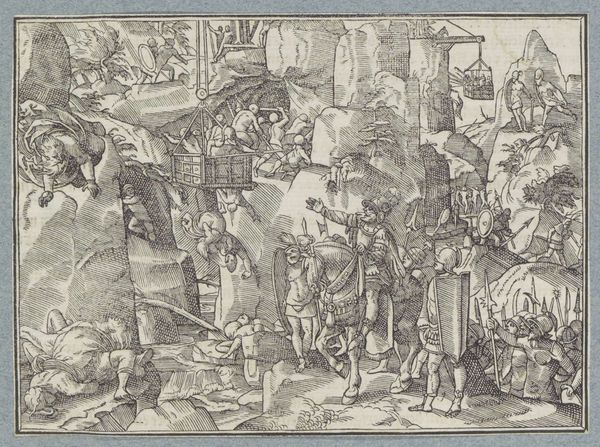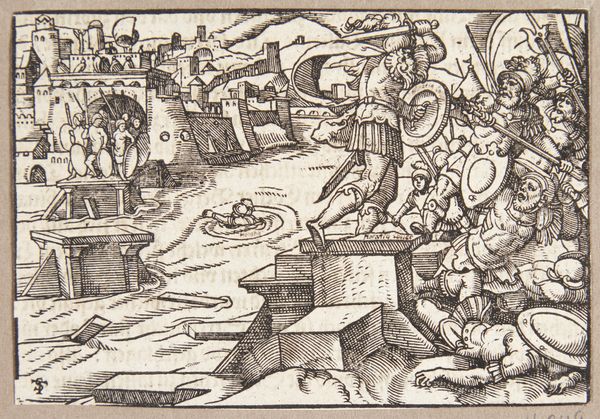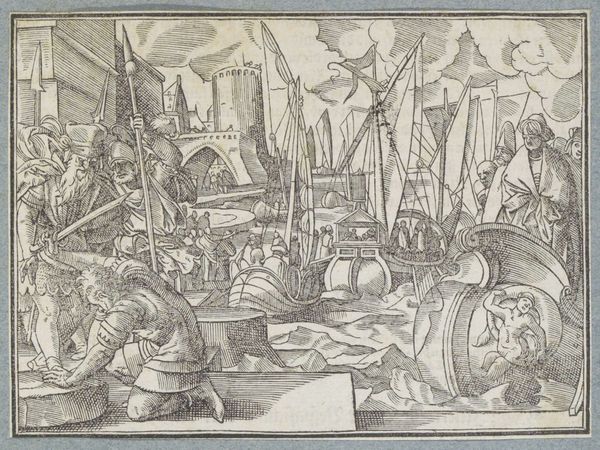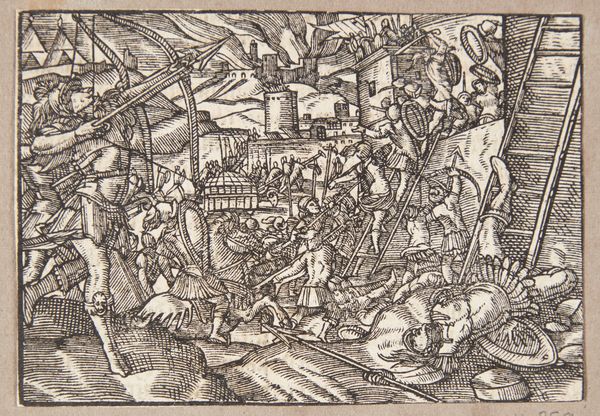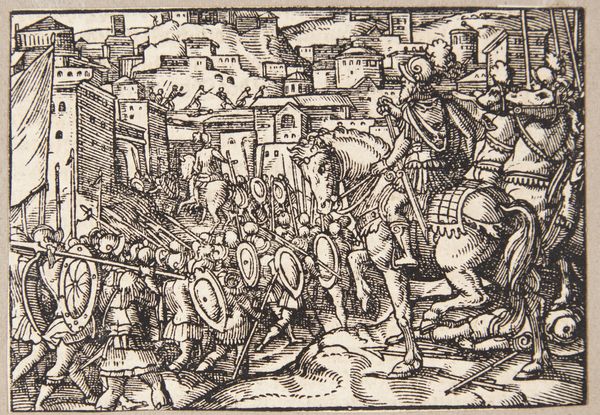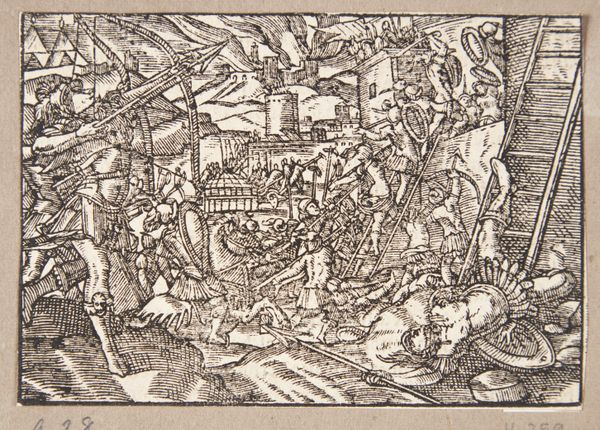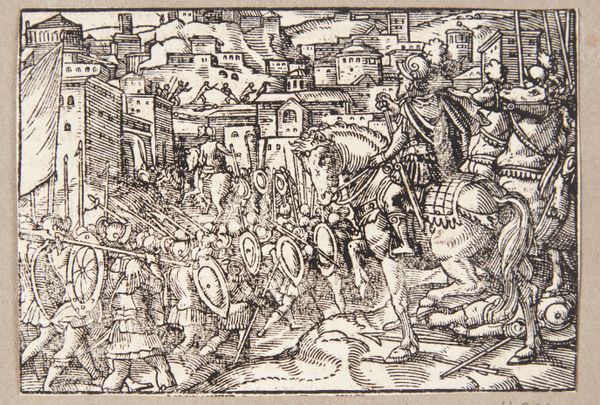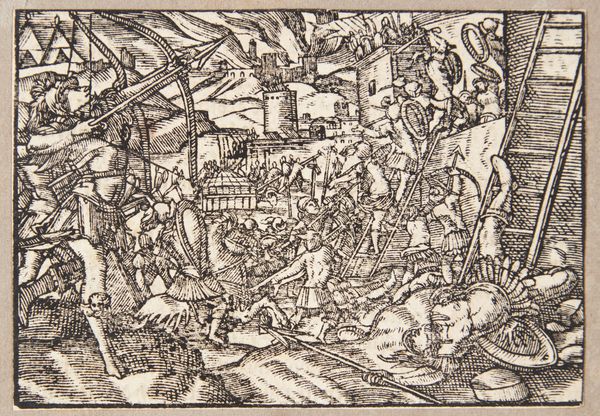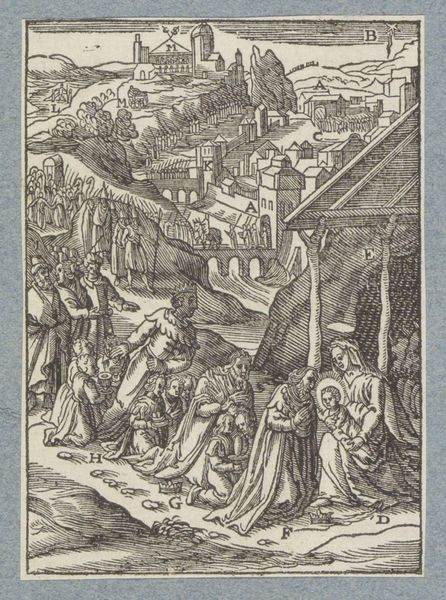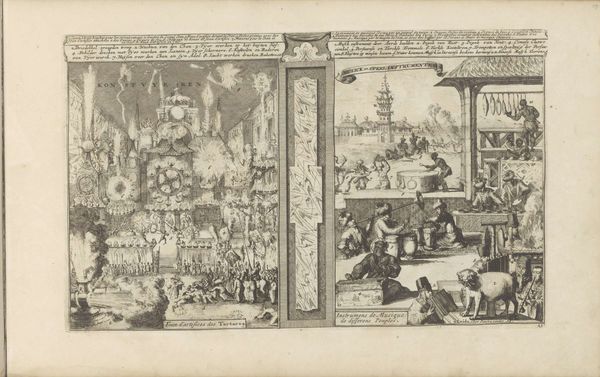
Ruiters met lansen verschijnen in de hemel boven Jeruzalem 1574
0:00
0:00
#
aged paper
#
toned paper
#
sketch book
#
personal sketchbook
#
sketchwork
#
pen-ink sketch
#
pen work
#
sketchbook drawing
#
storyboard and sketchbook work
#
sketchbook art
Dimensions: height 109 mm, width 149 mm
Copyright: Rijks Museum: Open Domain
Curator: "Ruiters met lansen verschijnen in de hemel boven Jeruzalem," made in 1574 by Christoffel van Sichem I, seems to capture a dramatic moment, almost theatrical in its staging. What's your initial reaction? Editor: The sheer busyness of the composition struck me first. It's crammed with figures and architectural details, and the aged paper gives it this antique, almost dreamlike quality. How do you interpret this work through a formal lens? Curator: Immediately, I’m drawn to the interplay between the terrestrial and celestial zones. Sichem masterfully utilizes linear perspective to create depth, guiding our eye from the detailed architecture of Jerusalem toward the heavens, where these spectral horsemen appear. Consider the deliberate contrast in texture: the earthly realm depicted with rough, cross-hatched lines versus the more ethereal treatment of the sky. What does this duality suggest to you in terms of structure and composition? Editor: The rough textures versus the smooth… I guess it emphasizes the divide between the tangible and the divine, making the apparition all the more otherworldly. It's also a very stark difference; they’re almost fighting for attention within the same frame. Curator: Precisely. The dynamic diagonals of the lances and the upward gaze of the figures further underscore this tension and direct our attention upwards. The architecture and figures offer stability at the bottom while ethereal figures appear from above. What strikes you about the organization of space and its effect? Editor: The figures feel almost trapped by the lines of the buildings below and heavenly creatures looming above, but I'm also wondering, given your expertise in form, does the somewhat chaotic linework perhaps contribute to a feeling of anxiety or uncertainty? Curator: It is quite compelling. Sichem’s technical control is evident in the precise engraving, enabling a visual structure which is far more stable and coherent than it might initially seem, despite the apparent surface chaos. Editor: So, by looking at line, texture, and spatial arrangement, we move past subject and emotion. I realize I had assumed the mood influenced form when the opposite might also be true. Curator: Exactly. Deconstructing the image formally, allows a more detailed interpretation. Form drives content. Editor: Thanks, seeing how the artist constructed this narrative, regardless of intention, it adds so much to it.
Comments
No comments
Be the first to comment and join the conversation on the ultimate creative platform.
